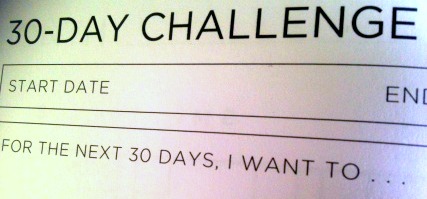I’ve always liked the idea of a 30-day challenge. Small daily steps towards change appeals to my practical nature. Twice, I’ve made NanoWrimo work for me, but outside of those group-fueled spurts, I’ve had little success with writing goals based on word count. My approach to writing is less linear more additive, lending itself to weekly goals, which takes a bite out of the benefit of a 30-day challenge.
This January, however, under the influence resolutions and fresh starts, I was seduced by a new planner. A lovely hardcover affair with bright white high-quality paper, filled with boxes and charts for daily, weekly and monthly goals. It was undated so I could start it and use it one my own terms.
It arrived mid-January and sat on my desk. It did not accompany me on vacation. The charts were overwhelming. I set it aside, thinking I’d use it when I got deep into the next book draft. Truth is it intimidated me. I’m fairly disciplined, but I wasn’t ready for the written commitment of practicing a behavior for 30 days.
I took the planner with me to a writing retreat in Vermont. I showed off its handsome (blank) pages to the other writers. I admitted my fear. How awful would it be to soil those lovely pages with unfulfilled intentions? So, I decided to keep them. It was just 30 days. What would happen if I put writing first?
It wasn’t easy and some days I did fail. The demands of my day job, seeing friends, even gym time got in the way. But I muddled through and while I didn’t get to all of the items on my list, I did write two new essays, revise a chapter from my WIP and get out a new pitch. Not bad, and as it turns out, not enough to make writing a habit again.
Through the ever-brilliant BrainPickings, I discovered a study by researchers from the University College of London that demonstrated that the average time it takes for a new habit to stick is actually 66 days.
So, I’m back at it for another 30.


